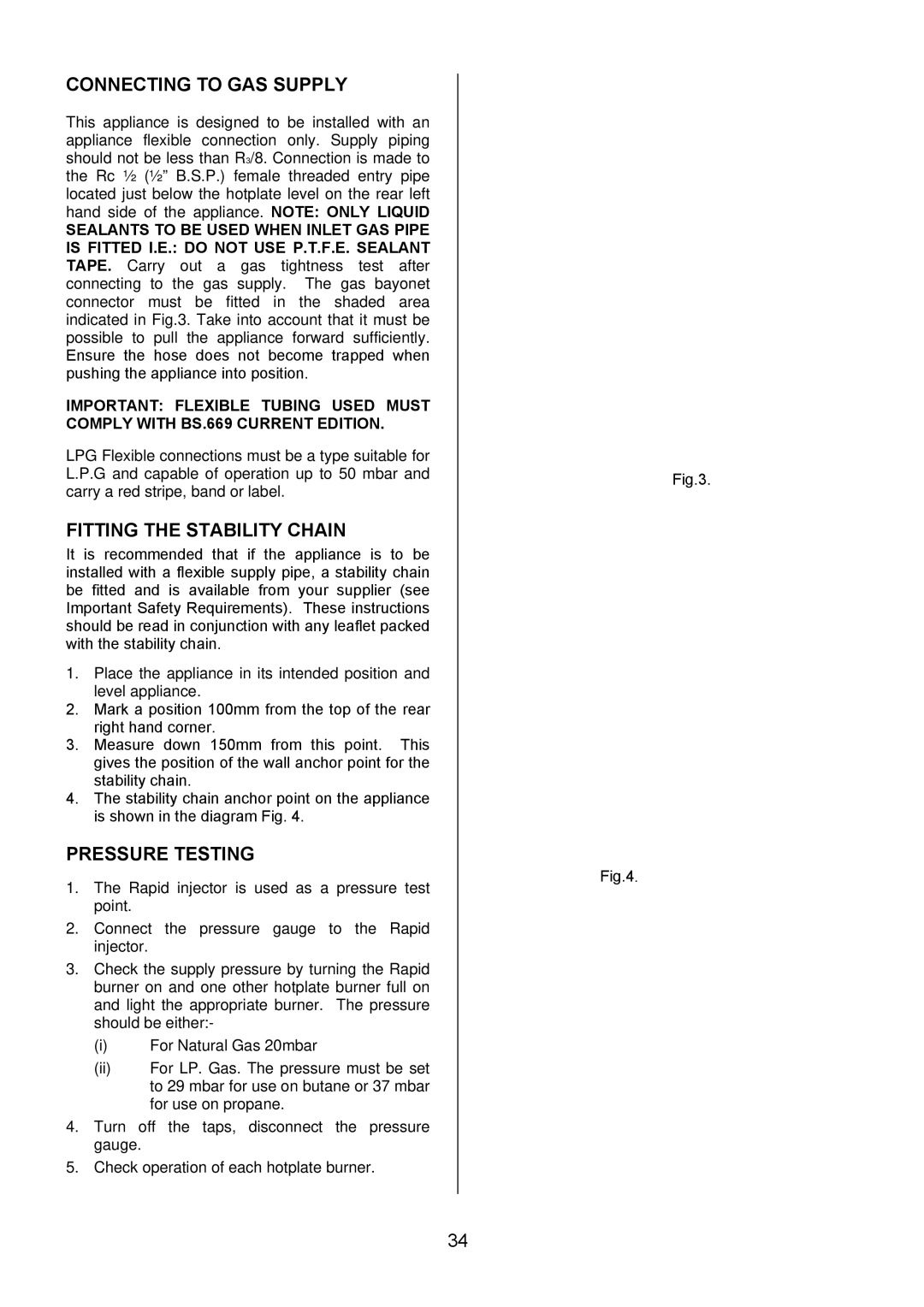EIKG5546, EIKG5547 specifications
Electrolux has a strong reputation in the world of kitchen appliances, and their EIKG5547 and EIKG5546 models exemplify this commitment to quality and innovation. These freestanding cookers are designed for versatile cooking, making them ideal for both amateur cooks and seasoned chefs.One of the standout features of the EIKG5547 and EIKG5546 is their efficient energy management. Both models come with an A energy rating, ensuring that they not only save on electricity costs but also contribute to a more sustainable environment. Energy efficiency is increasingly important for consumers, and these cookers deliver without compromising performance.
The EIKG5547 is equipped with four gas burners, each featuring a flame failure safety device. This technology ensures that if the flame goes out, the gas supply will be automatically cut off, providing peace of mind. The EIKG5546, while also featuring four burners, offers a different flavor with one powerful wok burner that provides additional heat for those larger pots, making it exceptionally versatile for stir-fry dishes or heavy-duty cooking.
Cooking is simplified in both models with the inclusion of a spacious oven. The EIKG5547 features a 70-liter capacity, while the EIKG5546 offers a slightly smaller option. Both ovens come equipped with a conventional heating system, ensuring even cooking results while making it ideal for baking. The ovens also include an easy-to-clean enamel interior that prevents food residue from sticking, making maintenance a breeze.
In terms of design, both the EIKG5547 and EIKG5546 feature a sleek stainless-steel finish that complements any modern kitchen decor. Their contemporary knobs and controls are intuitively placed for ease of use, allowing for seamless cooking experiences. In addition, the glass oven door provides visibility into the cooking process without needing to open the oven and release heat.
Aside from their impressive features, these cookers are designed with durability in mind. The robust construction and high-quality materials used ensure longevity, making them a wise investment for any household. Whether you're boiling, simmering, baking, or roasting, Electrolux’s EIKG5547 and EIKG5546 cookers stand out as reliable, high-performing options that bring convenience and efficiency to cooking. With a blend of safety, energy efficiency, and modern aesthetics, these appliances perfectly cater to contemporary culinary needs.

